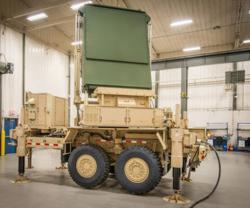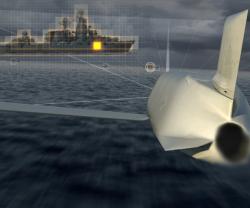Four consecutive tests verified that the simulated LRASM can break or “push through” the MK 41 canister’s forward cover without causing damage to the composite structure, air data probe or coatings of the missile.
The testing was part of a Lockheed Martin-funded shipboard integration effort to prove LRASM can successfully function as an Offensive Anti-Surface Warfare (OASuW) weapon. The push-through testing is an important risk reduction milestone critical to demonstrating LRASM’s surface launch capability.
LRASM is an autonomous, precision-guided anti-ship standoff missile leveraging the successful Joint Air-to-Surface Standoff Missile Extended Range (JASSM-ER) heritage, and is designed to meet the needs of U.S. Navy and Air Force warfighters.
“These test results verified that the LRASM vehicle can break through the VLS cover without damage at realistic flight speeds,” said Scott Callaway, LRASM Surface Launch Program Manager at Lockheed Martin Missiles and Fire Control.
“Lockheed Martin is investing in the shipboard integration of LRASM and we are confident it will meet all the requirements for the U.S. Navy,” he added.
The push-through testing, as well as a successful missile-to-canister fit check and integrated test of the weapon control system and VLS, significantly reduced risk on the program. Lockheed Martin will fly a Boosted Test Vehicle (BTV) version of LRASM from a MK 41VLS platform later this year, as well as in two government-funded Controlled Test Vehicle flights in 2014.
Armed with a proven penetrator and blast-fragmentation warhead, LRASM cruises autonomously, day or night, in all weather conditions. The missile employs a multi-modal sensor, weapon data link and an enhanced digital anti-jam Global Positioning System to detect and destroy specific targets within a group of ships.
LRASM is in development with Defense Advanced Research Projects Agency (DARPA) and the Office of Naval Research. Lockheed Martin’s offering has both surface-launched and air-launched variants to prosecute sea-based targets at significant standoff ranges.
Lockheed Martin Missiles and Fire Control is a 2012 recipient of the U.S. Department of Commerce’s Malcolm Baldrige National Quality Award for performance excellence. The Malcolm Baldrige Award represents the highest honor that can be awarded to American companies for achievement in leadership, strategic planning, customer relations, measurement, analysis, workforce excellence, operations and business results.






















